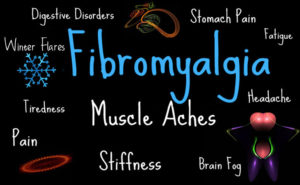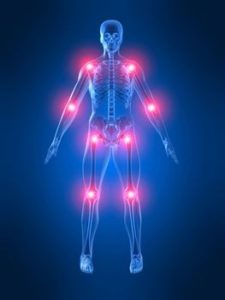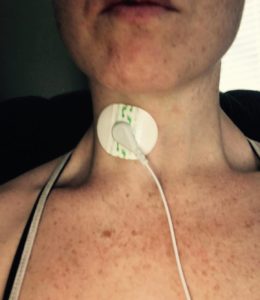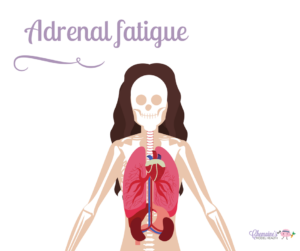Fibromyalgia pain
Category : Uncategorized
So if its been confirmed, you have fibromyalgia — Basically you have central allodynia pain, which is kind of like this pain that may be in like 11 different random spots of your body, tender spots — shoulders, chest, hips, back. To get a diagnoses, your medical practitioner looked for at least 11 out of the 17 or so spots that care concurrent with Fibromyalgia. And if you have them, well, you have fibromyalgia or central allodynia.
So what is a central allodynia? Allodynia is ancient Greek for ‘other pain’. That means your nervous system is so hypersensitive that it’s detecting you rubbing even simple things off your skin or body – things that shouldn’t cause pain. But they do, you have an increased nervous response. And that’s a big issue because the nervous system is so unregulated, it’s like having an antenna that’s so hypersensitive that it’s picking up stations that it shouldn’t be picking up. And it’s basically the same thing in your body. Your nervous system is an antenna that’s picking up all these nociception’s or pain sensations where it shouldn’t be. You/we want to get to the root cause of why that is. It could be caused by adrenal fatigue, issues with the HPA axis, leaky gut or an autoimmune issue, even too much stress in your life from either external stressors or mental / internal stressors.
Ok so how did this happen? Well there’s like over a 180 autoimmune conditions. An analogy I like is —- anytime you have a physical, chemical or emotional stress — imagine having this fancy pearl necklace, every time you pull tight, that’s a physical chemical or emotional stressor in your life. And let’s just say every little spot where that pearl connects to the necklace, they’re not all the same strength. There maybe some part to that chain that are little bit weaker. Think of that as genetic predisposition ….. So you may have certain genetic links in the chain that are going to be a little bit weaker. Now what does that mean to you? Well as that stress comes on, that part of the chain may be more likely to break than another part. Let’s say Pearl 10 is more likely to break or is weaker than Pearl 3 or 4. Now, Pearl 10 may be Fibromyalgia. And that stressor may be Roundup or junk food or alcohol. That could be just enough stress to break that link and activate your genes for Fibromyalgia. So think of every little link in that chain as a different disease that could manifest if that link is broken . And what that link looks like for you, is gonna be based on your genetic predisposition. But we have control over your environment and a choice of not over stressing those weak links. Even when we look at daily stress — Let it go, relax! How do we do that? Self care, walk, exercise, shop for a new dress, meditate, laugh, sing and so on.
What else can we do to support or help turn over fibromyalgia?
Address all of the diet (nutrition) and lifestyle things. Just cutting down on Roundup and eating organic can be a big help. That takes away some stress. And getting that good quality sleep, having good thoughts, fixing your gut, fixing infections, making sure you can digest and break down all that really good food that you’re eating. So looking at digestive enzymes can help. Get your hormones under control if there’s imbalances there too.
Even if you are predisposed – its like you have a loaded gun but its up to you if you pull the trigger or not. You an control your environment and make things easier on yourself.
In life, sometimes we don’t have the best options always available either, when we’re traveling or we’re going out to eat. But if we can control the 80 to 90% when we’re home and we’re in our house and the foods that we choose in our area, that’s gonna be the most important thing — we are always trying to stack conditions in our favor. Also, when you’re healthy, you get a little bit more wiggle room because your already stronger. But when you’re chronically sick, you don’t. So if you’re chronically sick, then you really got to be careful and make the best decisions possible. And if you’re going to get exposed to toxins and things, activated charcoal is a great option, as is Chlorella and Spirulina for binding to said toxins. Taking some extra liver support may be helpful, too. These are some things to keep in mind if you know you’re going to be getting exposed to ‘not so good’ things.
Also taking in digestive enzymes can be great if your having issues breaking down food, get a good quality methylated B vitamin and make sure your keeping a nice acid pH in your body. This is important for breaking down foods in your stomach and fighting off bad bacteria.
Hopefully all this will help you to start getting a hold on your fibromyalgia condition 🙂










